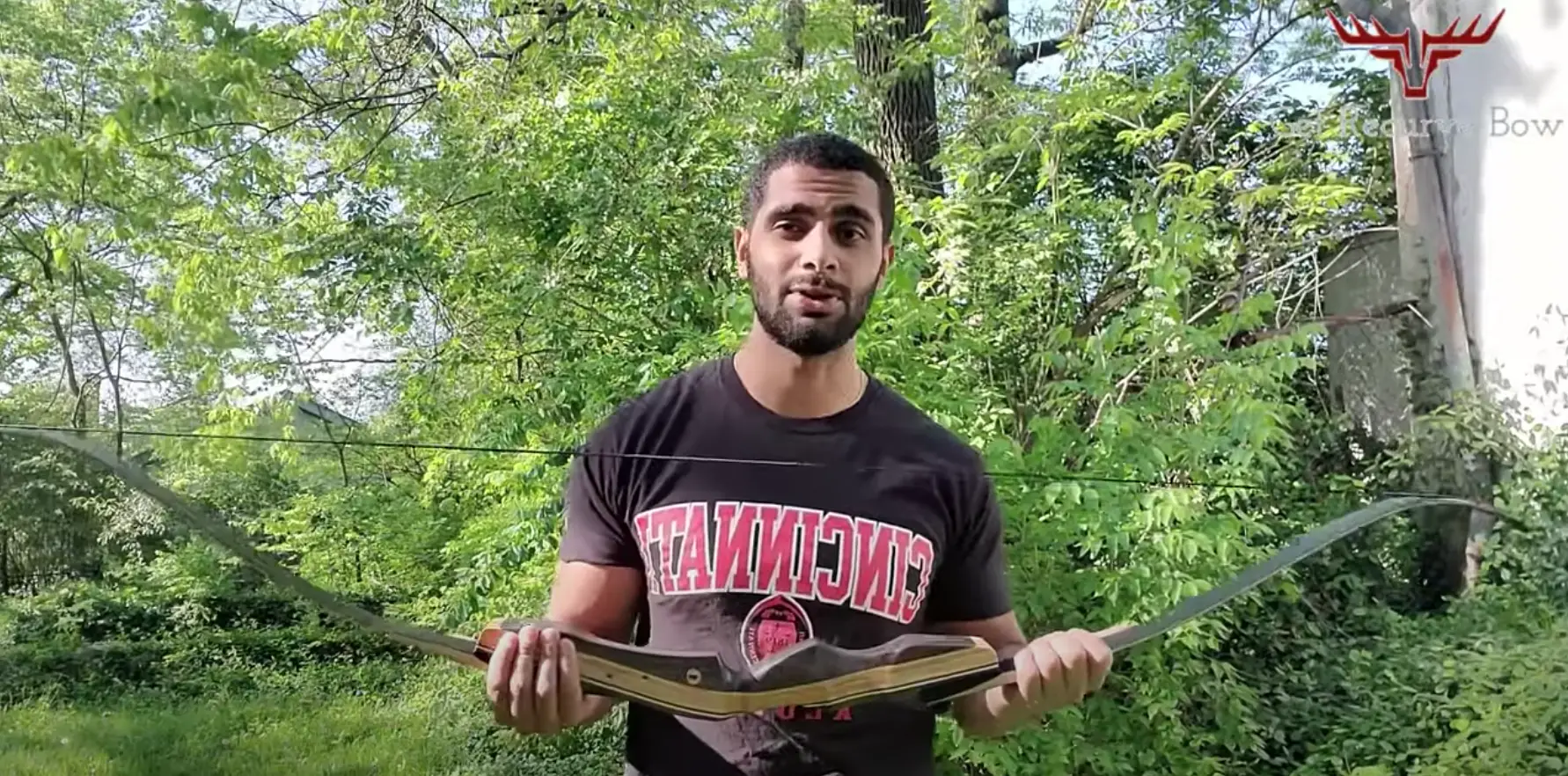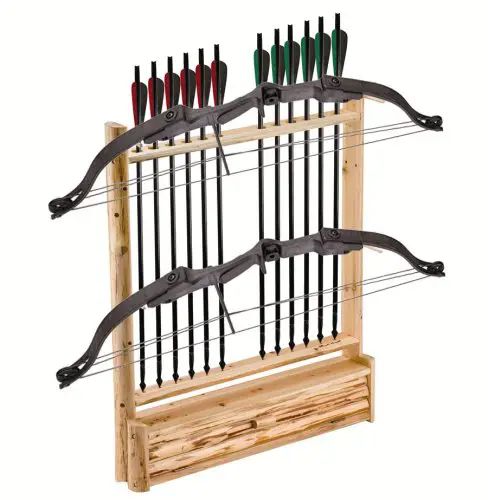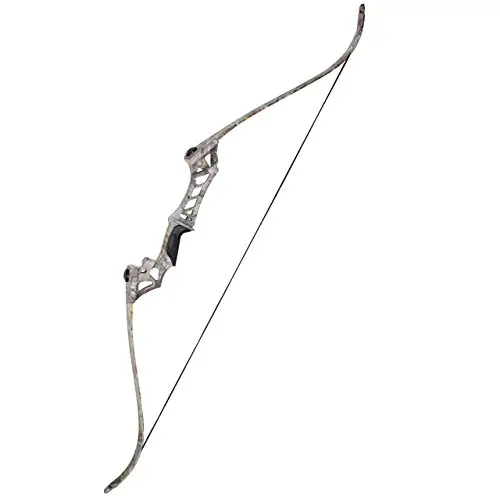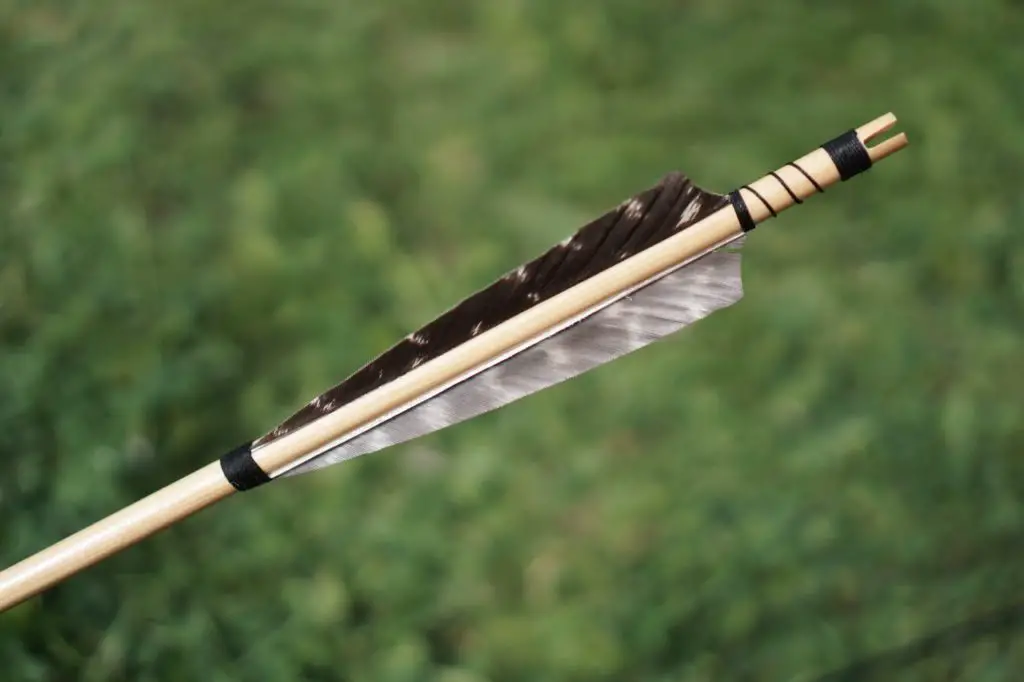
A button buck approaches the edge of the meadow; you carefully draw your bow and the string breaks.
Knowing how to string a recurve bow properly could be the difference between bagging a deer and going home empty-handed.
Read on for step-by-step instructions and important tips on restringing a recurve bow.
Two Methods to String a Recurve Bow
A recurve bow can be strung either by hand, using the step-through method, or by using a bow stringer. Equipment manufacturers recommend the use of a bow stringer.
Using a bow stringer not only allows for a more consistently strung bow but also prevents you from getting hurt. It’s not uncommon for the limbs to recoil during the stringing process, causing injury.
Bow Stringers
There are two different designs for bow stringers:
- Double pocket – a large pocket that fits over the lower limb and a smaller pocket that fits over the top limb tip
- Saddle type – a large pocket that fits over the lower limb, and a saddle, made of dimpled rubber or leather, that fits behind the string loops around the upper limb
Step-by-Step Process
Step one: Ready the Bow
Start by locating the top loop string – it will be the larger of the two loops. The top loop goes over the top limb.
The bottom loop should slide into the string grooves on the bottom limb.
Step two: Attach the Stringer
Hold your bow horizontally. Whether you’re using a double pocket or saddle type stringer, start with the top limb.
If using a double pocket, slide the small pocket over the top limb. For saddle types, position the saddle over the upper limb, and below the bowstring loop.
After attaching the saddle or pocket to the top limb, slide the larger pocket over the lower limb.
Step three: String the Bow
Hold your bow by the handle with one hand and step on the cord of the bow-stringer. Step on the string with both feet, placing them should-width apart.
Use your other hand to take up the slack in the cord of the bow limb, just behind the string loop.
Pull straight up to flex the limbs. While you pull, slide the top string loop into the limp string grooves.
Step four: Check the Bow
Use your fingers to ensure the string has seated properly.
Step off the cord, turning the bow so its limbs face away from you and rotating it so that it’s vertical instead of horizontal.
Make sure that the string is secure in both limb tips.
Remove the bow stringer.
Check both your brace height and nocking point height. If both of those check out, you are ready to shoot!
Wrapping Up
Learning to string a recurve bow is an important skill for any hunter. By following the simple steps above, you’ll quickly become a pro. Good equipment also makes a big difference.
If you’re looking for a new bow stringer, check out our review of the best recurve bow stringers as well as our recent review of the Bowtactix Bow Stringer to see if it’s the right one for you.

Archery is my hobby & I usually hunt and play on weekends and after work. It’s a passion since I was very young and I love writing about it as well to continuously learn more and share the love of archery with others!





